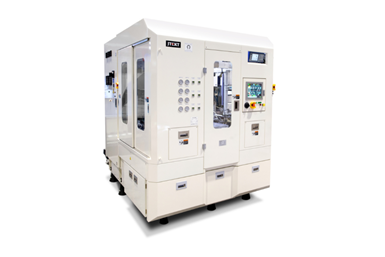JTEKT Offers High-Productivity Disc Grinder
The new DXSG320 grinder includes fully automated work handling internal to the machine.
Share




JTEKT’s new double-disc horizontal grinder can simultaneously grind both sides of silicon wafers to ±1 μm from as-sliced condition. According to the company, the DXSG320’s performance represents a massive improvement in accuracy and productivity over the single-spindle vertical grinders common in the chip industry today which grind to 3-4 μm.
The new DXSG320 grinder features a footprint of approximately 20% smaller than other machines while including fully automated work handling internal to the machine. Wafers are put into a fixture and loaded into a rack system to carry the wafers into the machine for sizing and finishing to customer specifications.
To assure correct stock removal and optimum quality, wafer thickness is measured before and after grinding. During grinding, discs float in the fixtures and spin during the grinding process, resulting in rapid, even material removal. Since there is no need to flip over the part during the grinding process, users will save on cycle time. According to a spokesperson, the machine’s single wafer grinding method makes for ease of automation and easy traceability.
Another advantage this machine offers over the vertical spindle design is equal stock removal on both sides of the disc in one operation; it consistently removes the same amount of stock on both sides, compared to vertical machines which only grind one side at a time.
Key features of the grinder include a GW high frequency spindle with air static pressure and a built-in motor to achieve high speed, high accuracy grinding. In-process, wheel positioning is automatic through high accuracy air gauging. The machine is compatible with a variety of data collection systems through user-friendly communication software.
Related Content
-
Inside the Premium Machine Shop Making Fasteners
AMPG can’t help but take risks — its management doesn’t know how to run machines. But these risks have enabled it to become a runaway success in its market.
-
Inside a CNC-Machined Gothic Monastery in Wyoming
An inside look into the Carmelite Monks of Wyoming, who are combining centuries-old Gothic architectural principles with modern CNC machining to build a monastery in the mountains of Wyoming.
-
CNC Machine Shop Honored for Automation, Machine Monitoring
From cobots to machine monitoring, this Top Shop honoree shows that machining technology is about more than the machine tool.


























